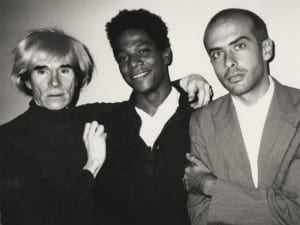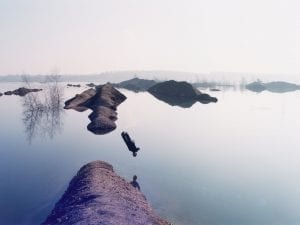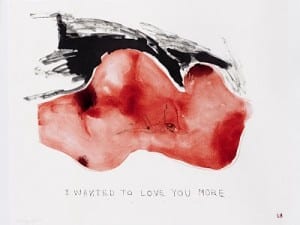Currently housed within the Stanley and Audrey Burton Gallery at University of Leeds the visitor can expect to discover a retrospective of Michael Lyons’ work from the inception of its mature conceit. Here can be found work from the 1960s and 1970s. The culmination of the evolution of Lyons’ work, charted here across these two decades, is the outdoor, large-scale sculpture Lenten Cover (1979). This can be found in the campus grounds. During his time as a student at Newcastle University Lyons made the irksome and unsettling work, Traitors’s Gate (1966), which is currently exhibited at Leeds Art Gallery. An overall thematic reference to an arch-like gateway is given treatment under the influence of Duchamp and Surrealism. Subsequent works saw the influence of Vorticism and an interest in mechanical objects. Conceptually, therefore, a canonic turn of mind delineates the Western tendency separating and selecting varying levels of atomistic abstraction for special emphasis or violation detectable (arguably) back to Cezanne.
A prominent, medium-scale work encountered by the visitor in the exhibition space at S & A Burton Gallery Is Elidore (1970). The preoccupation is clearly one relating to the mechanical and, indeed, science here. The work appears to be a machine but with no rational function. The materials are employed are brass and steel. Reference is made to the component parts of microscopes, cigarette lighters and powder flasks. An invocation of the absurd is the studied and measured impression; although, at first glance, the exhibit is constructed with such a concern for imparting purposive and utilitarian invention that the Surrealism is not an instant revelation.
A similar aesthetic abides in the case of Force 9 (1970), which is made from fabricated steel. As in Elidore, the use of fabricated, circular rims and hoops, painted with an industrial and utilitarian functional indifference, provide the impression that the intention behind the machine might be inspection or scientific observation. From an alternative angle these circular forms might serve some rotary function mounted, as they are, on heavy duty stands and shafts. These ‘wheels’ are not, however, positioned to function either in parallel, perpendicular or in any way flowing together that seems to justify the functional relevance of the ‘machine’. In the case of these sculptures the abiding uncertainty and ambiguity surrounding function and absurdity is pleasantly unsettling. The laudable construction of them that has been contrived to suggest mechanistic movement contributes further to this impression.
This elemental and implicit acknowledgement of the influence of Vorticism is drawn out in subsequent works. The exhibit, Niagara (1971), made from steel, successfully captures and ‘freezes’ the form at the point of maximum momentum. Downward and reactively explosive motion on impact is the impression, achieved gracefully in form with cumbersome and ungainly content. A spear-like shaft of steel provides vertical relief to the contrasting cascade.
On the walls of the exhibition space the visitor finds collages and designs of sculptures in charcoal, pastel and ink. These are works in themselves. The use of collages invokes the thought that despite the two-dimensional form, the artist was naturally inclined or drawn to construction in three dimensions. Taken as a whole the visitor witnesses Freeze Frame as an artistic and personally evolutionary process of graceful and finely balanced frozen kinesis.
Daniel Potts
Michael Lyons, Freeze Frame at The Stanley & Audrey Burton Gallery until 9 July. Find out more at www.library.leeds.ac.uk/art-gallery-exhibitions
Credits:
1. Installation views of Freeze Frame at The Stanley & Audrey Burton. Courtesy of the artist.




